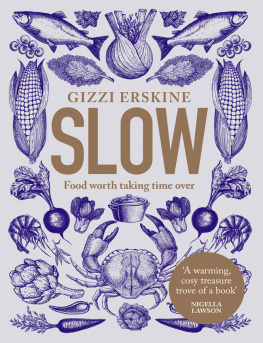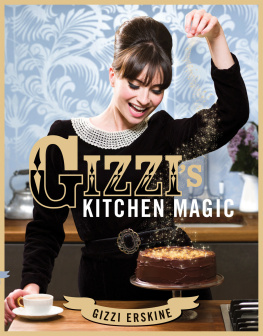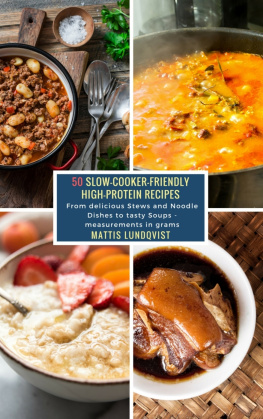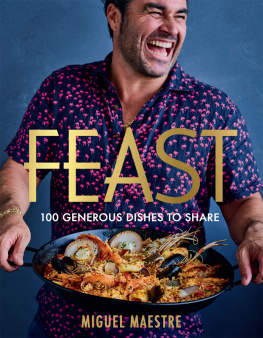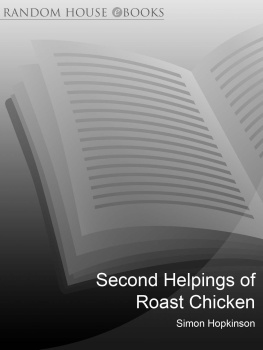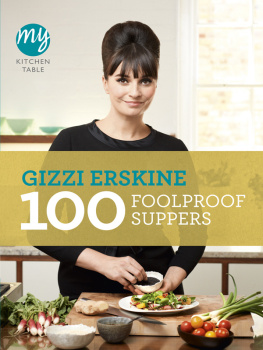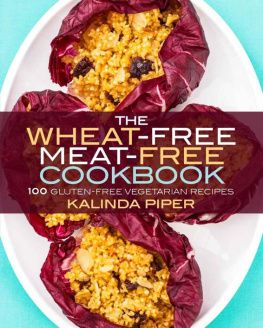


CONTENTS
HOW TO USE THIS EBOOK
Select one of the chapters from the and you will be taken to a list of all the recipes covered in that chapter.
Alternatively, jump to the to browse recipes by ingredient.
Look out for linked text (which is underlined and/or in a different colour) throughout the ebook that you can select to help you navigate between related recipes.

INTRODUCTION
Theres no denying that I have a healthy appetite. I love food, I love eating and I love cooking. Theres nothing I dont like to eat, except perhaps mangetout (pointless and flabby) and durian (poo fruit). I am a chef for two reasons: partly because I have a huge ego and I love feeding people and receiving their praise, but mainly because food makes people happy and has a way of soothing us from the inside out. Food doesnt just feed my body; it also feeds my soul.
Ive written about healthy eating over the years, but recently Ive seen an influx of books encouraging us to eat clean, make better choices, become vegan for our health or undertake extreme diets and no one knows what the best advice actually is.
The more I see of peoples food concerns on Twitter and Instagram, the more I see the love pouring out of food. Its as though people are so concerned about what they are putting into their bodies that food has lost its soul. Food should first and foremost be delicious. If we stick to some simple rules like eating a variety of different-coloured fruits and vegetables daily, eating smaller portions of better carbs, high-quality proteins and some good fats, then we will be getting all the nutrition we need for optimum health.
Back when I made Cook Yourself Thin we were using vegetables in place of carbohydrates, choosing non-starchy carbs as mash and putting vegetables in cakes to reduce the sugar and fat content. Now, there are some brilliant, new techniques for making things like vegan, gluten-free and sugar-free cakes, cauliflower rice and spiralized vegetable noodles, all of which can be a revelation when used in the right way with the right ingredients.
Cooking for a healthy appetite often seems to be geared more towards the healthy and less towards an appetite for food. However, I want to show you how to use those healthy ingredients in a more delicious way. I also want to instil the message that being healthy is as much about moderation as it is about nutrition. Ive always lived by the 80/20 rule: if you eat healthily 80 per cent of the time then youre allowed a little bit of something that may be considered naughty the rest of the time.
The chapters of this book are divided into textures and flavours. For me, those textures and flavours often reflect my mood. For example, if I crave something braised or oozy it may mean that Im after something rib-sticking and comforting but if I want crunch or crispness then I probably feel the need for something clean and fresh. Sometimes I want fiery food, so we have a chapter for spice, and other times I just need something sweet, and theres a chapter for that too.
So, here I am. I want to start a new food revolution; one where people have a better understanding of nutrition but dont forget that eating should be enjoyable.
MY ETHOS
Every week, when I open up a newspaper or womens magazine theres a new bit of health information that puts a spanner in the works of what I had previously thought was the right way to be healthy. So here is my ethos, and a bit about how I feel about food trends and what we can learn from them.
Firstly, I believe that having a better understanding of nutrition is not just about making your body healthier, it can also make you a better cook. The more I learn about different ingredients or come across a new cooking technique, vegetable or cut of meat, the more inspired I tend to be. I want this book to teach you that its good to love food in all its guises and that sometimes your body needs to be fed what its craving. Ultimately, I want people who are reading this book to try new things and push themselves into new areas of food, be it going to your local Asian supermarket or having a go at cooking with a new ingredient or gadget. I just hope people are inspired to cook fresh food using good ingredients.
THE 80/20 RULE
I follow the 80/20 rule. Im good most of the time but absolutely allow myself to eat what I want the rest of the time, just so long as the foods been made with fresh ingredients. That said, Im partial to a bit of processed cheese in my hamburger and I am going to eat it once every so often so sue me! The 80/20 rule can be applied daily, but I think it works best when you eat healthily during the week and have a blow-out one day of the weekend and perhaps the odd dinner out. Theres also another way you can apply the 80/20 rule: have 20 per cent less food on your plate, eat 20 per cent fewer carbohydrates and eat 20 per cent more vegetables. This will allow you to eat pretty much what you want, but you will be consuming 300400 fewer calories a day. Its a simple but good rule to stick to.
CARBS
The glycaemic index (GI) scale shows how quickly blood sugar levels are raised after eating particular foods. Things like protein and green veg barely register on the scale, making them very low GI, and whole grains are also low GI because your body has to fight to digest them. Whereas, sugars, many fruits and processed white carbohydrates will make your blood sugar levels shoot up, releasing insulin into the blood and allowing the body to lay down fat. Because of this, I try to eat foods that are low GI whenever I can.
Im pro carbs but I do think its important not to eat too many of them. We should be averaging (depending on gender and height) about 60100g (in weight) of carbohydrate per meal, which, shockingly, is just a small bowl of pasta, an open sandwich or a handful of rice. Start weighing your carbs and youll soon see that you eat more than you should. My theory is that its better to eat some carbs than none.
SUGAR
Its a sad fact that if we eat a balanced diet of carbohydrates, dairy, protein, fruit and vegetables then we are already consuming the right amount of sugar for our bodies and those who eat lots of carbs and fruit may be consuming too much sugar. This means that the addition of refined sugar into our diet can play havoc with our blood sugar levels. Just so long as we dont go crazy, a small amount of cake, chocolate or sweets isnt going to affect us that badly, but its definitely something we should be aware of.
When you process sugar you remove the small amount of fibre that allows your body to absorb the sugar straight into the bloodstream. While there are lots of great-tasting unrefined sugars available, not many of them work in the same way that refined cane sugar does in cooking, which is a right royal pain in the ass. If you simply want to add some sweetness to something, thats fine, but if youre trying to make a meringue, cake or brownie, things can go horribly wrong. Trust me, Ive done an absurd amount of tests trying to make this work so you dont have to. I have written most of my recipes using golden caster sugar (or muscovado sugar or maple syrup for flavour or caramelization). You can, if you like, use other sugars in any recipes that arent for meringues, cakes or brownies. My favourite alternatives are coconut blossom nectar, coconut sugar, agave nectar and rapadura sugar. You may need to experiment with them as they all have varying degrees of sweetness.
Next page

